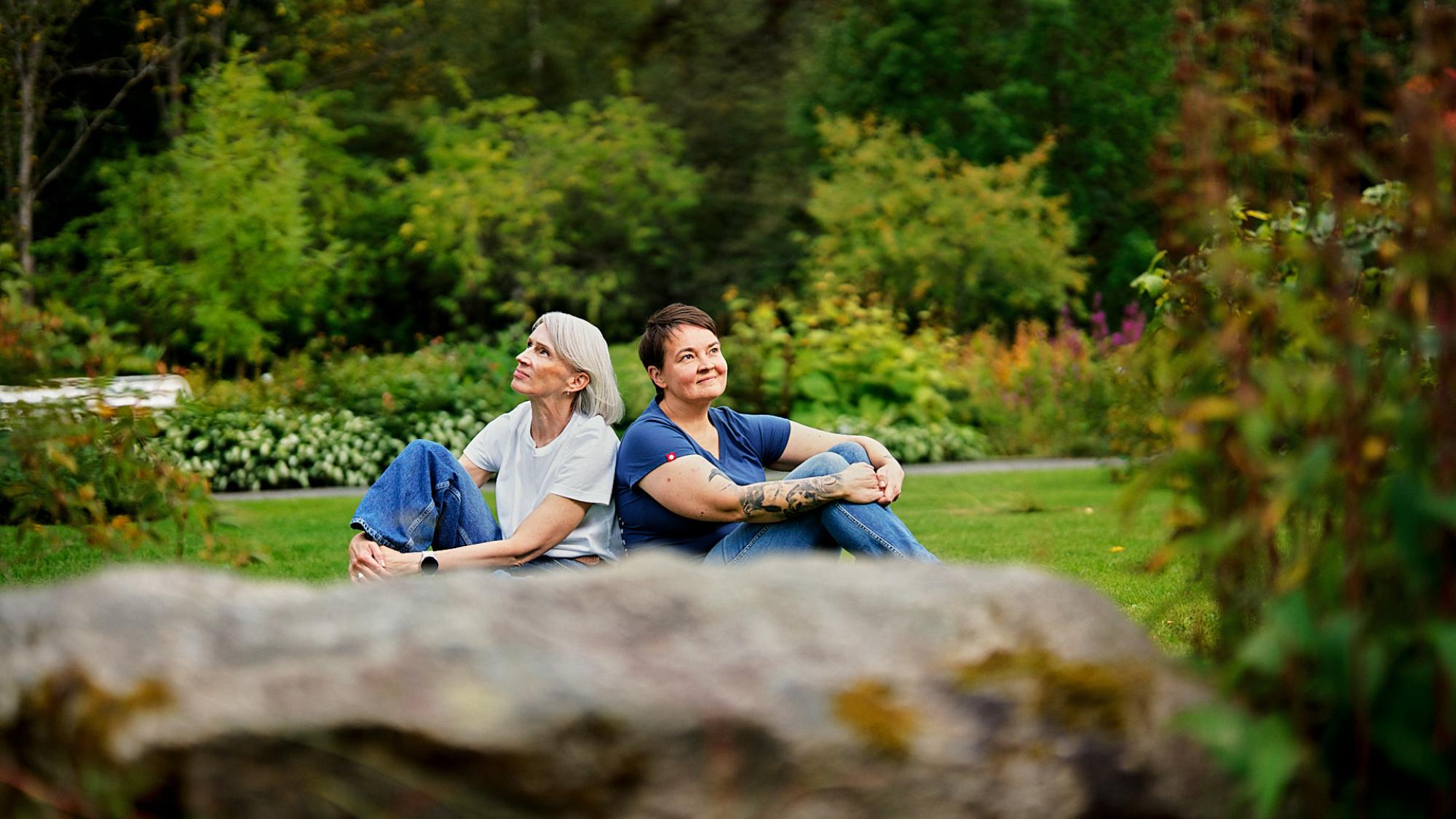Succeed together: Communications Specialist Anna-Maria Hietapelto and Professor Pauliina Rautio bring science into the spotlight

Their first meeting is remembered for eggs. Professor of biodiversity education, Pauliina Rautio, ended up posing with eggs in her hands when the university's communications department organized a photoshoot for researchers. The official images did not feature a stiff, serious-looking researcher.
“Pauliina is certainly brave enough to throw herself into things,” communications specialist Anna-Maria Hietapelto recalls thinking at the time.
Pauliina Rautio works at the Faculty of Education and Psychology at the University of Oulu, where she studies people's relationships with the environment and animals. Rautio is reportedly the only professor of biodiversity education in the world. Unofficially, however, she calls herself the professor of the living diversity.
“Biodiversity as a word can refer to natural sciences, but I am not a biologist, I am an educational scientist.”
Words truly matter. Hietapelto, who works in science communication at the University of Oulu, is tasked with writing clear and concise press releases and avoiding overly complex language. Distribution of press releases also requires careful consideration.
“We still distribute press releases broadly, but we now also contact media outlets in a more strategic way. Networking has become more important and traditional press conferences are arranged less frequently.”
Humanity can show through
Pauliina Rautio turned to the university's communications at the end of 2024 when her Research Council of Finland-funded HOMINGS research project and its online survey needed media visibility. The research sought people’s experiences with the species found in their homes, such as sugar ants or voles in their yards.
The topic was so media-friendly that interview requests quickly started pouring in. Pauliina asked Anna-Maria for coaching for the interviews.
“I can always talk about my research, but I wanted to plan together with Anna-Maria how to make sure the journalists would pick up exactly the message I wanted to convey.”
Rautio’s strength is her personality, which she is not afraid to show even in public appearances. The professor also runs a bird rescue center as a volunteer, where she cares for injured wild birds. The center has its own Instagram account, and Rautio has given magazine interviews about the topic.
“It’s easy for me to talk about my work through the lens of my own life, as I can't really separate the two. I want to highlight the human side of a researcher's work.”
Interviews are teamwork
Anna-Maria has noticed that the media is also interested in the people behind professional roles. For many researchers, revealing personal aspects is still difficult.
“In communications, our job is to respect this wish, but we encourage everyone to build effective interaction with journalists. Research is funded by public money, so people have the right to know about it. I also think that researchers are the bringers of hope in our society, and people want to get to know them.”
At the University of Oulu, communications closely follows the research conducted in different units.
“The best situation would be if researchers would contact us with a low threshold and early enough to let us know about their upcoming research. That way, we could together plan the best media strategy.”
In the university’s media communication trainings, radio and TV interviews are demonstrated and concrete tips are given for working with the media.
“I personally think that in the end, it’s about cooperation. The ideal situation is when both the media and the interviewee are satisfied with the result,” says Pauliina Rautio.
Five tips for researchers
- Trust that your research interests many people.
- Consider what your main message is.
- Think about your topic through the eyes of an ordinary citizen.
- Contact your faculty’s communications specialist.
- Communication is not rocket science, but about simplification and making things concrete.
The successful ones:
Anna-Maria Hietapelto
Work: Communications specialist at the University of Oulu since 1999.
Education: Master’s in Journalism.
Motto: “Things have a way of working out.”
Pauliina Rautio
Work: Professor of biodiversity education. Working at the University of Oulu since 2006.
Education: Doctor of Education.
Motto: “One thing at a time or everything turns into a pancake.”